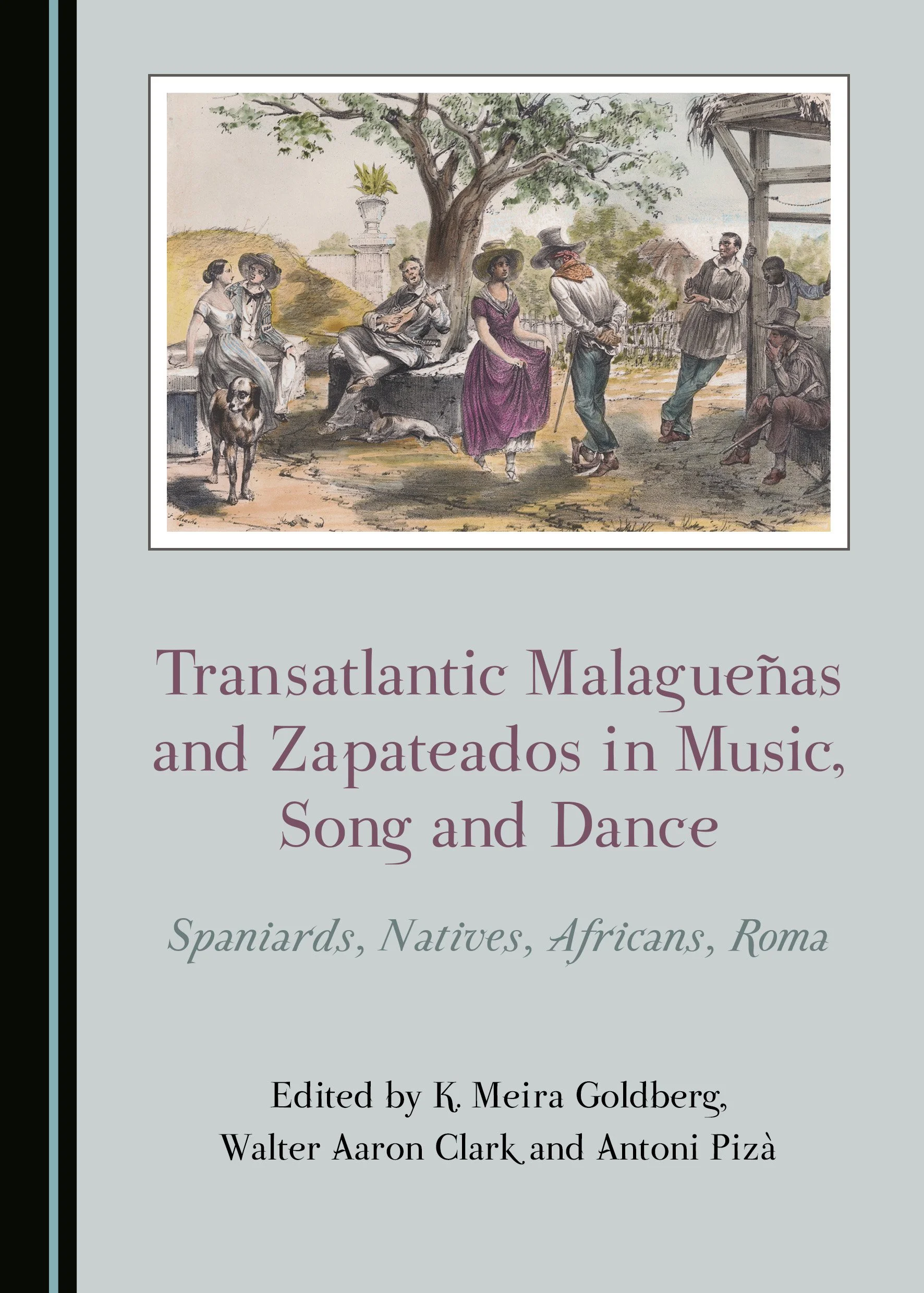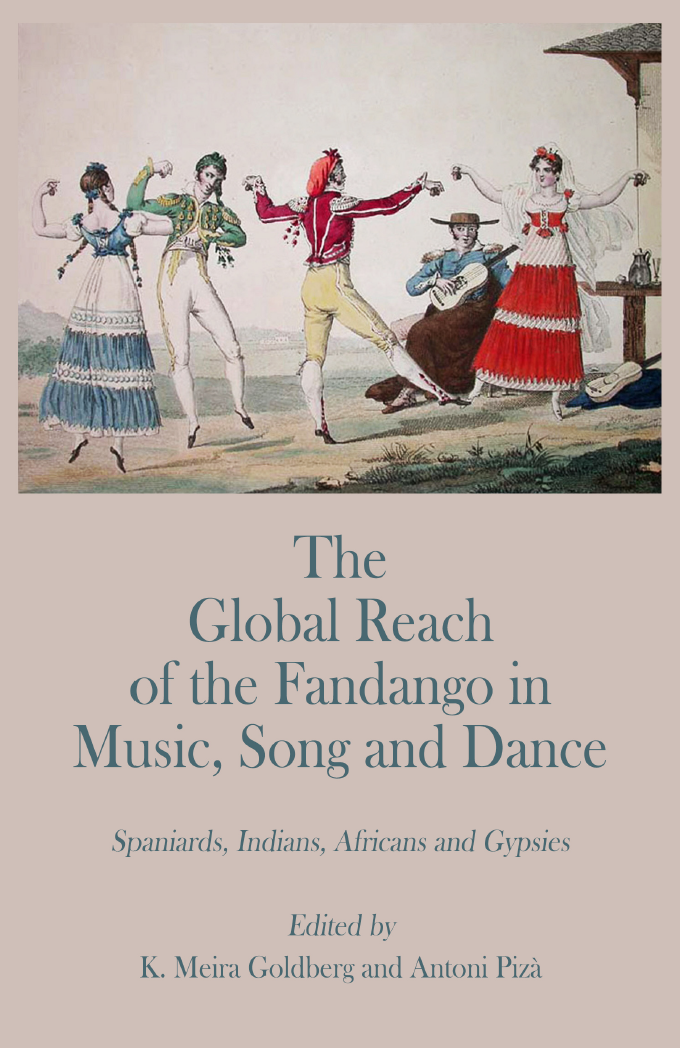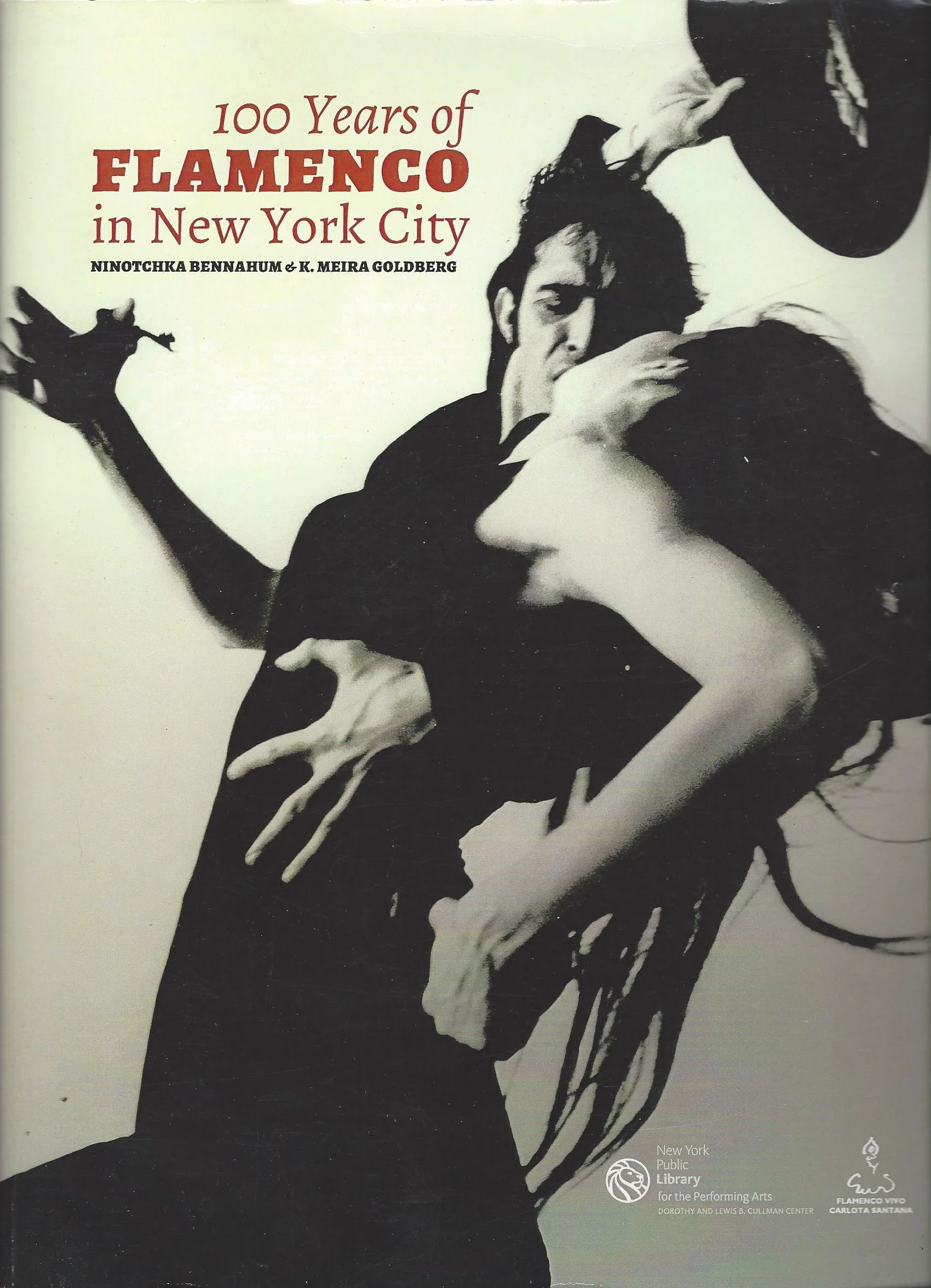Dr. K. Meira Goldberg
Dr. K. Meira Goldberg is a flamenco performer, teacher, choreographer, and historian. As a performer, she worked in Spain with with artists such as Antonio Canales, Arturo Pavón, Diego Carrasco, and Ramón El Portugués, and in the US she was the first dancer with Carlota Santana’s Flamenco Vivo, Fred Darsow, and Pasión y Arte. She teaches at the Fashion Institute of Technology and is Scholar in Residence at the Foundation for Iberian Music at the CUNY Grad Center. She has taught and guest lectured at Sarah Lawrence College, New York University, Flamenco Festival International in Albuquerque, Ballet Hispanico, Bryn Mawr, Princeton, Duke, Juilliard, The New School, Temple University, Brown, University of California Santa Barbara, the University of Texas Austin, Kansas University, and Smith College.
Photo Credit: Michael Penland
Select Scholastic Work, Writings, and Research
Sonidos negros. S
obre la Negritud del flamenco.
Disponible a partir del 15 de mayo de 2022
¿Cómo se inscribe la política de la Negritud en el cuerpo flamenco? ¿Cómo baila el flamenco la Negritud? O, por decirlo de otra manera, ¿Cómo se despliega la construcción de la raza en el mundo atlántico dentro del baile flamenco? Sonidos negros: sobre la Negritud del flamenco traza cómo, en el tiempo transcurrido entre 1492—el año en que la Reconquista coincide con el desembarco de Cristóbal Colón en la isla americana de Hispaniola— y 1933 —cuando el poeta andaluz Federico García Lorca publica su “Teoría y juego del duende”— el moro se torna negro, y cómo el gitano imaginado encarna las contiendas sonoras e iconográficas de este proceso. Ya en el XIX, en el declive de su dominio colonial, la identidad española se representa en términos de un gitano juglar, un mestizaje de imágenes americanas y españolas de la Negritud.
The Body Questions: Celebrating Flamenco's Tangled Roots
This collection of essays poses a series of questions revolving around nonsense, cacophony, queerness, race, and the dancing body. How can flamenco, as a diasporic complex of performance and communities of practice frictionally and critically bound to the complexities of Spanish history, illuminate theories of race and identity in performance? How can we posit, and argue for, genealogical relationships within and between genres across the vast expanses of the African—and Roma—diaspora? Neither are the essays presented here limited to flamenco, nor, consequently, are the responses to these questions reduced to this topic. What all the essays presented here do share is the wish to come together, across disciplines and subject areas, within the academy and without, in the whirling, raucous, and messy spaces where the body is free—to celebrate its questioning, as well as the depths of wisdom and knowledge it holds and sometimes reveals.
Sonidos Negros: On the Blackness of Flamenco
How is the politics of Blackness figured in the flamenco dancing body? What does flamenco dance tell us about the construction of race in the Atlantic world? Sonidos Negros traces how, in the span between 1492 and 1933, the vanquished Moor became Black, and how this figure, enacted in terms of a minstrelized Gitano, paradoxically came to represent Spain itself. The imagined Gypsy about which flamenco imagery turns dances on a knife's edge delineating Christian and non-Christian, White and Black worlds. This figure's subversive teetering undermines Spain's symbolic linkage of religion with race, a prime weapon of conquest. Flamenco's Sonidos Negros live in this precarious balance, amid the purposeful confusion and ruckus cloaking embodied resistance, the lament for what has been lost, and the values and aspirations of those rendered imperceptible by enslavement and colonization.
Transatlantic Malagueñas and Zapateados in Music, Song and Dance
Transatlantic Malagueñas and Zapateados is an exploration of two fandango dances, recording the circulations of people, imagery, music, and dance across what were once the Spanish and Portuguese Empires. Although these dance-musics seem to be mirror images, the unbreachable space between them reflects the political fault-lines along which nineteenth-century musical populism and folkloric nationalism extend into present-day debates about globalization, immigration, neoliberalism, and neofascism. If malagueñas are a fantastic incarnation of Spanishness, caught like a fly in amber by their anachronistic references to a fraught imperial past, noisy and raucous zapateado dances cut toward the future. Inherently marked by European conventions of zapatos (shoes), zapateados are nonetheless shaped by Africanist and Native American footwork traditions. In these Afro-Indigenous mestizajes, not only are European aesthetic values reordered and resignified, but the Catholic catechism which indoctrinated the New World yields to alternate spiritual systems springing out of a culture of resistance to European domination.
The Global Reach of the Fandango in Music, Song and Dance: Spaniards, Indians, Africans and Gypsies
The fandango, emerging in the early-eighteenth century Black Atlantic as a dance and music craze across Spain and the Americas, came to comprise genres as diverse as Mexican son jarocho, the salon and concert fandangos of Mozart and Scarlatti, and the Andalusian fandangos central to flamenco. From the celebrations of humble folk to the theaters of the European elite, with boisterous castanets, strumming strings, flirtatious sensuality, and dexterous footwork, the fandango became a conduit for the syncretism of music, dance, and people of diverse Spanish, Afro-Latin, Gitano, and even Amerindian origins. Once a symbol of Spanish Empire, it came to signify freedom of movement and of expression, given powerful new voice in the twenty-first century by Mexican immigrant communities. What is the full array of the fandango? The superb essays gathered in this collection lay the foundational stone for further exploration.
Flamenco on the Global Stage: Historical, Critical, and Theoretical Perspectives
The language of the body is central to the study of flamenco. From the records of the Inquisition to 16th-century literature to European travel diaries, the Spanish dancer beguiles and fascinates. The word flamenco evokes the image of a sensuous and rebellious woman—the bailaora —whose movements seduce the audience, only to reject their attention with a stomp of defiance. The dancer’s body is an agent of ideological resistance, conveying a conflicting desire for subjectivity and autonomy and implying deeply held ideas about history, national identity, femininity, and masculinity. This collection of new essays provides an overview of flamenco scholarship, illuminating flamenco’s narrative and the chronology, and addressing some common misconceptions. The contributors offer fresh perspectives on age-old themes and suggest new paradigms for flamenco as a cultural practice.
100 Years of Flamenco in New York City
This exhibit is a love letter to flamenco in New York City. It presents an intimate portrait of the traveling lives of Spanish and American dancers, many of them women, who came to New York in search of fame, fortune and freedom. This is also the story of a form of Spanish dance – flamenco – that walks arm-in-arm with ragtime, jazz and hip hop in defining its era and nation. Flamenco is as much a language of expression as a dance of resistance to poverty, injustice, the Spanish Civil War and four decades of dictatorship under Franco. The exhibition tracks the artistic evolution of Americans whose lifelong dedication produced an American School. Like any immigrant form, flamenco comes of age on new soil, melting into the established rhythms of the city. Today, flamenco ultimately holds something of America inside.
Selected Lectures Availble Online
November 18, 2021: “Tracing Duende: On the Pellizco, a Rhythmic Gesture in Flamenco Dance.” Invited speaker in the series Sonic Conversations in the Western Mediterranean, Department of Music, University of Aberdeen
Oct. 22, 2019: Sonidos Negros: On the Blackness of Flamenco. Temple University Dance Studies Colloquium.
November 14, 2020 conference presentation: “Tracing Duende: On the Pellizco, a Rhythmic Gesture in Flamenco Dance” American Musicological Society Annual Conference annual meeting.
Dr. Goldberg teaching bulerías improv at Fazil's in 2005.







